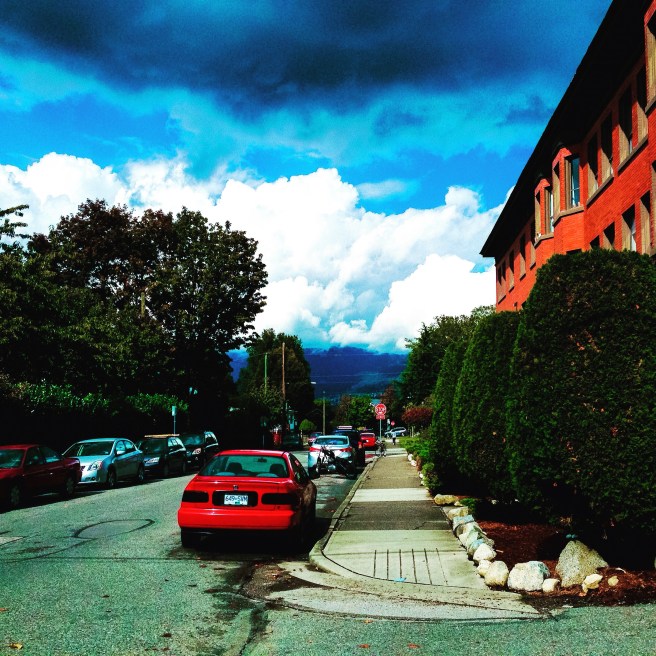I received a review copy of The Soup Sisters Family Cookbook from Appetite by Random House at a book launch edition of a Soup Sisters evening. Nevertheless, all opinions in the following post are my own.
I firmly believe that cooking for others and with others is one of the surest ways to build and support community. It’s the belief that underpins block parties, cookie swaps, and soup swaps, as well as initiatives like the community kitchens that bring vulnerable people together to cook and connect or Montréal’s Newcomer Kitchen that gives space to newly arrived Syrian women to prepare and sell food, establishing themselves in their new home.
For Sharon Hapton, this motivation blossomed into the Soup Sisters and Broth Brothers, a network across 25 Canadian and U.S. cities that brings groups of people together to cook and eat, all for the benefit of women, children, and youth in crisis. A typical monthly gathering yields 150 – 250 litres of soup, which is brought to local shelter partners the next day. Participants benefit from working with a group of like-minded folks, alongside talented chefs that keep everyone on track in the kitchen. While the soup is simmering, those same chefs feed the night’s volunteers, starting with a hearty bowl of soup. It’s an elegantly crafted concept that’s resulted in waiting lists for these monthly gatherings and a steady stream of healthy, lovingly crafted food for folks who need it.
You can learn more about Soup Sisters directly from Sharon, in this interview:
Sharon Hapton on CBC’s The Homestretch
Last night, I attended a gathering at one of Vancouver’s regular Soup Sisters venues, Northwest Culinary Academy of Vancouver. It was both a soup-making event and a book launch, because the third Soup Sisters cookbook, The Soup Sisters Family Cookbook, arrived on October 17th. Appetite by Random House and Food Bloggers of Canada invited a number of bloggers and foodies to make soup and learn more about Soup Sisters and its newest collection of recipes.
This isn’t my first introduction to Soup Sisters. I’ve been following their work for years and have always wanted to take part in one of their soup-making evenings. I also own a copy of their second cookbook, The Soup Sisters and Broth Brothers Cookbook, which I reviewed in 2015. I turn to it often for recipes and inspiration when I’m in a soup-making mood.
Like their previous cookbooks, the new one features recipes from chefs, bloggers, and Soup Sisters participants, but this time a number of the recipes were contributed by kids and teens. Cooking with young people is the focus of this book, with some tips and advice for getting kids into the kitchen and a host of accessible recipes. Making soup is a great introduction to cooking, especially with kids. It’s a process that can be broken down into many manageable steps, there is always something new happening throughout the process to keep kids interested, and the end result is the kind of meal that people of all ages will enjoy.
Last night’s participants split up into teams, each making one of five soups destined for Sereenas House for Women, a supportive housing program in Vancouver’s Downtown Eastside. All the recipes were from the new cookbook, as was the soup that Chef Tony Minichiello made for our meal. His soup was a recipe from his wife’s family, an Armenian lentil and rice soup that has a deceptively simple list of ingredients for a soup so rich in flavour. My team (which dubbed itself “Team Nourish”) made a Chicken Tortilla Soup that was shared by Earls Restaurants. Other teams tackled Maritime Fish Chowder (Laura Calder), Spaghetti and Mini Meatball Soup (Bonnie Stern), Every Bunny Loves Carrot Soup (Skylar & Chloe Sinow), and Posh-Tasting Red Pepper and Coconut Soup (Taya Groner). Those last two were contributed by young participants and they were in attendance at the event to cook their soups with us.
Our evening started with appetizers made with brioche the cooking school students had made that morning and topped with ricotta, arugula, caramelized onion, and roasted tomato. We were given an introduction to Soup Sisters, a presentation from a representative of Sereenas House, and a talk from Sharon Hapton, introducing the new book and talking about the program’s origins. Then we all went to our stations and started chopping and dicing. In no time at all, it seemed our soups were ready for their long simmer. In part, this was because many hands truly make light work, but it was really the help and guidance of Northwest’s chefs and students that made the work fly. They also kept an eye on our soups while we went off to prepare labels and eat dinner. Our dinner started with Chef Tony’s soup and he talked about the history of the soup in his own family while the bowls were passed down the table. The soup was followed by a salad rich in greens and topped with couscous and our meal finished with slices of light mousse cake that had been prepared for us by the school’s pastry students. After dinner, we ladled soup into containers and each team produced between 25 and 30 litres of soup for donation. I think we all felt a little spoiled and also quite pleased with how much soup we collectively produced.
We all went home with a copy of the cookbook courtesy of Appetite, but I think many of us will also be buying copies to give as gifts this holiday season, especially because the sale of the books helps to support the program. If you’re curious about any of the Soup Sisters cookbooks, they have some sample recipes from the 2nd volume in the series up on their website. I’m happy to have 100 more great soup recipes at my disposal and I’d especially recommend this book to anyone who cooks with kids.
I’d also suggest, the next time you’re considering a gathering for a celebration or a team-building exercise, find out if there is a branch of Soup Sisters near you and book an evening. The fees go toward purchasing the best seasonal ingredients for the soups and you’ll have a richly rewarding experience and a richly delicious meal, to boot.



























